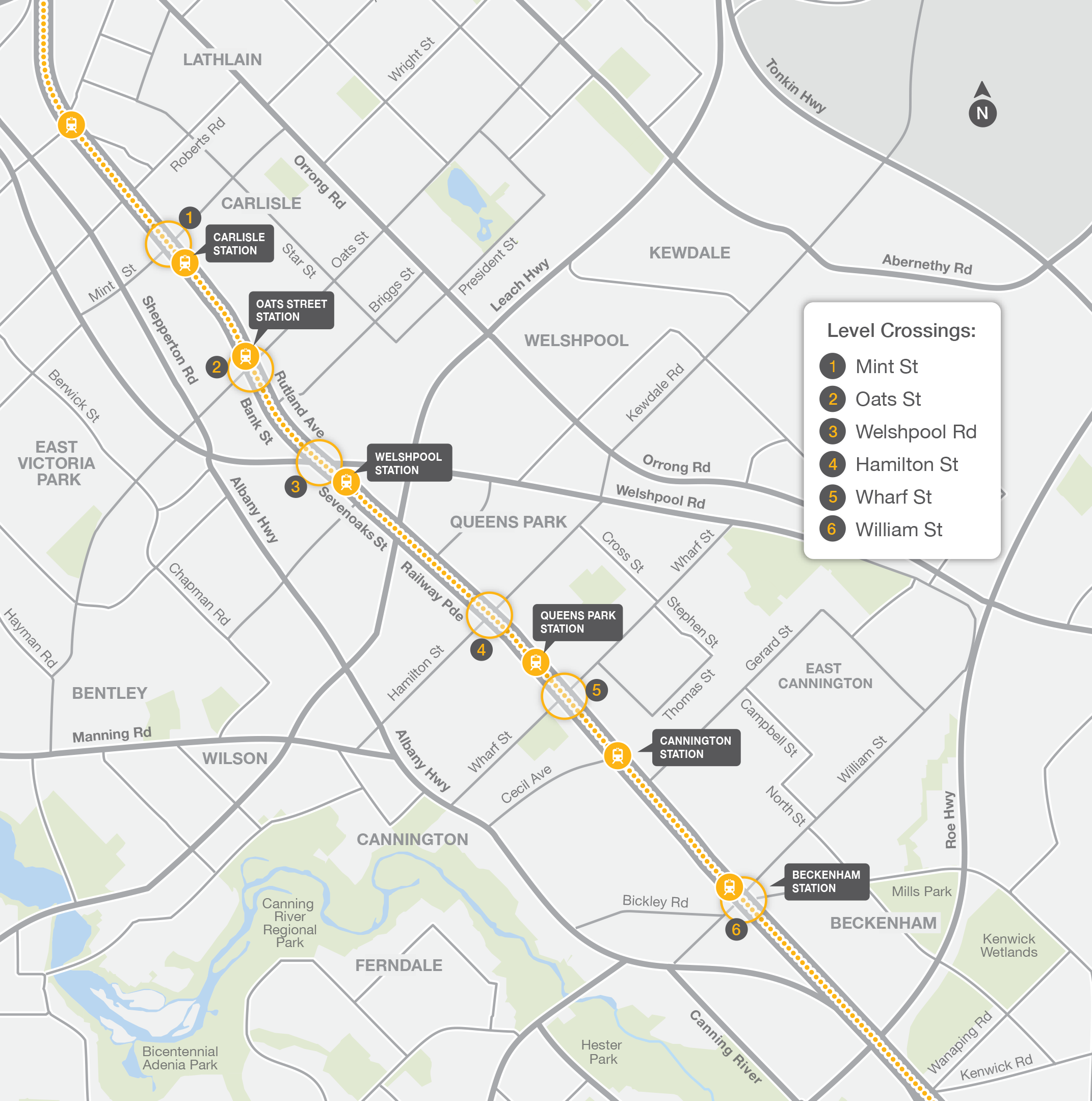Get ready for a safer, smoother journey as we bid farewell to six level crossings along the Armadale Line, including:
- Mint Street
- Oats Street
- Welshpool Road
- Hamilton Street
- Wharf Street
- William Street.

With boom gates having been down for over three hours daily, drivers and pedestrians no longer face traffic congestion and inconvenience.
We’re building four kilometres of elevated rail along the Armadale Line, creating a safer way to cross the rail corridor.
In addition to improving road safety and reducing traffic congestion, we’re helping develop a more connected community.
As part of the project, we're building modern and elevated stations, and vibrant public spaces under the elevated rail for community members to use with their friends, family and neighbours.